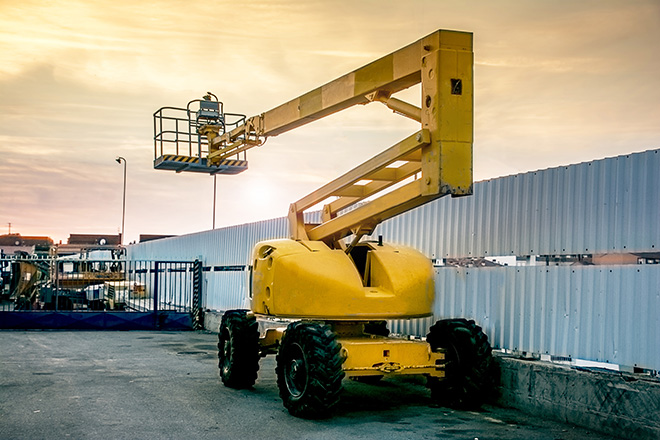Annual Testing and Five-Year NDT for Aerial Devices

Aerial devices are critically important to many industries as a means of completing work tasks at elevation. Ensuring the safety of these devices is also critical. Scheduled maintenance and testing is important, not only because it is required by law, but more importantly, these actions identify and correct issues that lead to catastrophic results for the people working on them.
For aerial devices, such as elevated platforms, booms, or ladders, improper maintenance and metal fatigue are the most common problems that lead to the device being unsafe and removed from service. However, adhering to a scheduled testing and maintenance program is the easiest way to avoid most unexpected events.
Testing Requirements for Aerial Devices
To begin, it is critical to fully understand the testing requirements for the various types of lifting equipment. There are two levels of testing required by NFPA for testing aerial devices: an Annual Test and a Non-Destructive Test (NDT) performed every 5 years. The Annual Test must be scheduled and completed each year or anytime a device has been subjected to use beyond its manufacturer’s recommended capabilities. Typically, the Annual Test is the execution of a visual inspection and an operational test with both results being properly documented.
The NDT examination is typically called a Five-Year Non-destructive Test, and this test must be completed by a qualified and certified Level II Technician as specified by ASNT. NDT is a method used to inspect a device that does not interfere with the material properties of the device and does not physically alter the device or hinder its normal use in any way. Some typical NDT methods are Radiography, Ultrasonic Testing (UT), Metal Hardness, and Liquid Penetrant Testing. These are all methods that can identify cracks, deformities, or metal fatigue on the device or its components, which going undetected lead to safety issues for operators.
Following Maintenance Guidelines Matters
Beyond following the required guidelines for testing and inspections, it is also important to follow the manufacturer’s guidelines for maintenance and care. Best Practices recommend budgeting for the care and maintenance of the fleet and to ensure the safety of the crew and the community. If the equipment is visually inspected regularly and kept cleaned, it is less likely to have anything more than normal wear and tear.
Choosing The Right Aerial NDT Provider
Always partner with a trusted service professional who offers high-quality, fast, and professional services. It is important, when you are scheduling your services, that you know exactly what you need. Our team of experts deploying 40 years of Quality Leadership combined with IIA’s unmatched geographic reach can help you. So no matter where you are, we can improve your reliability and the well-being of your operators.
NEED A QUOTE?
Simply fill out your name, number, and email below and someone from our team will contact you within 24 hours.




